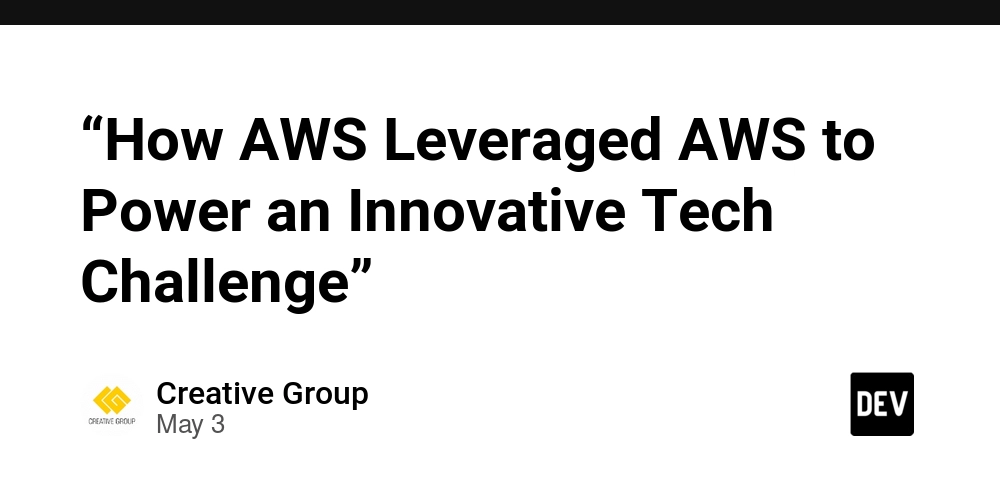Feeling Pressure to Invest in AI? Good—You Should Be
AI is not new. Humans began researching AI in the 1940s, and computer scientists like John McCarthy opened our eyes to the possibilities of what this technology could achieve. What is relatively new, though, is the volume of hype. It feels exponential. ChatGPT was released in 2022 to great fanfare, and now DeepSeek and Qwen […] The post Feeling Pressure to Invest in AI? Good—You Should Be appeared first on Unite.AI.


AI is not new. Humans began researching AI in the 1940s, and computer scientists like John McCarthy opened our eyes to the possibilities of what this technology could achieve. What is relatively new, though, is the volume of hype. It feels exponential. ChatGPT was released in 2022 to great fanfare, and now DeepSeek and Qwen 2.5 have taken the world by storm.
The hype is understandable. Due to increased computational power, access to larger datasets, improved algorithms and training techniques, AI and ML models are practically doubling in efficacy every few months. Every day we’re seeing significant leaps in areas like reasoning and content generation. We live in exciting times!
But hype can backfire, and it can suggest that there’s more noise than substance when it comes to AI. We’ve all grown so accustomed to the information overload that often accompanies these groundbreaking developments that we can inadvertently tune out. In doing so, we lose sight of the incredible opportunity before us.
Perhaps due to the preponderance of “noise” around generative AI, some leaders may think the technology immature and unworthy of investment. They may want to wait for a critical volume of adoption before deciding to dive in themselves. Or maybe they want to play it safe and only use generative AI for the lowest-impact areas of their business.
They’re wrong. Experimenting and potentially failing fast at generative AI is better than not starting at all. Being a leader means capitalizing on opportunities to transform and rethink. AI moves and advances incredibly quickly. If you don’t ride the wave, if you sit out under the pretense of caution, you’ll miss out entirely.
This technology will be the foundation of tomorrow’s business world. Those who dive in now will decide what that future looks like. Don’t just use generative AI to make incremental gains. Use it to leapfrog. That’s what the winners are going to do.
How bad could it be?
Generative AI adoption is a simple matter of risk management—something executives should be plenty familiar with. Treat the technology like you would any other new investment. Find ways to move forward without exposing yourself to inordinate degrees of risk. Just do something. You’ll learn right away whether it’s working; either AI improves a process, or it does not. It will be clear.
What you don’t want to do is fall victim to analysis paralysis. Don’t spend too long overthinking what you’re trying to achieve. As Voltaire said, don’t let perfect be the enemy of good. At the outset, create a range of outcomes you’re willing to accept. Then hold yourself to it, iterate toward better, and keep moving forward. Waiting around for the perfect opportunity, the perfect use-case, the perfect time to experiment, will do more harm than good. The longer you wait, the more opportunity cost you’re signing yourself up for.
How bad could it be? Pick a few trial balloons, launch them, and see what happens. If you do fail, your organization will be better for it.
Failure really does build character. And resiliency.
Let’s say your organization does fail in its generative AI experimentation. What of it? There is tremendous value in organizational learning—in trying, pivoting, and seeing how teams struggle. Life is about learning and overcoming one obstacle after the next. If you don’t push your teams and tools to the point of failure, how else will you determine your organizational limits? How else will you know what’s possible?
If you have the right people in the right roles—and if you trust them—then you’ve got nothing to lose. Giving your teams stretch goals with real, impactful challenges will help them grow as professionals and derive more value from their work.
If you try and fail with one generative AI experiment, you’ll be much better positioned when it comes time to try the next one.
Identify avenues for experimentation.
To get started, identify the areas of your business that generate the greatest challenges: consistent bottlenecks, unforced errors, mismanaged expectations, opportunities left uncovered. Any activity or workflow that has masses of data analysis and tricky challenges to solve or seems to take an inordinate amount of time could be a great candidate for AI experimentation.
In my industry, supply chain management, there are opportunities everywhere. For example, warehouse management is a great launchpad for generative AI. Warehouse management involves orchestrating numerous moving parts, often in near real time. The right people need to be in the right place at the right time to process, store, and retrieve product—which may have special storage needs, as is the case for refrigerated food.
Managing all these variables is a massive undertaking. Traditionally, warehouse managers do not have time to review the countless labor and merchandise reports to make the stars align. It takes quite a lot of time, and warehouse managers often have other fish to fry, including accommodating real-time disruptions.
Generative AI agents, though, can review all the reports being generated and produce an informed action plan based on insights and root causes. They can identify potential issues and build effective solutions. The amount of time this saves managers cannot be overstated.
This is just one example of a key business area that can be optimized by using generative AI. Any time-consuming workflow—especially one that involves processing data or information before making a decision—is an excellent candidate for AI improvement.
Just pick a use-case and get going.
Just dive in.
Generative AI is here to stay, and it’s moving at the speed of innovation. Every day, new use-cases emerge. Every day, the technology is getting better and more powerful. The benefits are abundantly clear: organizations transformed from the inside out; humans operating at peak efficiency with data at their side; faster, smarter business decisions; I could go on and on.
The longer you wait for the so-called “perfect conditions” to arise, the farther behind you (and your business!) will be.
If you have a good team, a sound business strategy, and real opportunities for improvement, you’ve got nothing to lose.
What are you waiting for?
The post Feeling Pressure to Invest in AI? Good—You Should Be appeared first on Unite.AI.







































































































































































![[The AI Show Episode 145]: OpenAI Releases o3 and o4-mini, AI Is Causing “Quiet Layoffs,” Executive Order on Youth AI Education & GPT-4o’s Controversial Update](https://www.marketingaiinstitute.com/hubfs/ep%20145%20cover.png)
































































































































![From Art School Drop-out to Microsoft Engineer with Shashi Lo [Podcast #170]](https://cdn.hashnode.com/res/hashnode/image/upload/v1746203291209/439bf16b-c820-4fe8-b69e-94d80533b2df.png?#)








































































































(1).jpg?#)































_Inge_Johnsson-Alamy.jpg?width=1280&auto=webp&quality=80&disable=upscale#)













































































































![Apple Developing AI 'Vibe-Coding' Assistant for Xcode With Anthropic [Report]](https://www.iclarified.com/images/news/97200/97200/97200-640.jpg)
![Apple's New Ads Spotlight Apple Watch for Kids [Video]](https://www.iclarified.com/images/news/97197/97197/97197-640.jpg)







































































![[Weekly funding roundup April 26-May 2] VC inflow continues to remain downcast](https://images.yourstory.com/cs/2/220356402d6d11e9aa979329348d4c3e/WeeklyFundingRoundupNewLogo1-1739546168054.jpg)




























